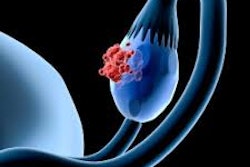Diffusion-tensor (DTI)-MRI reveals how Alzheimer's -- and cerebral small vessel disease (cSVD) -- affect the brain's white matter microstructure, researchers have found.
The effect of these conditions, which are the two most common causes of dementia, on the brain's white matter differ from physiological changes caused by healthy aging, wrote a team led by Mario Tranfa, MD, of the University “Federico II” in Naples, Italy. The findings were published May 16 in the Annals of Clinical and Translational Neurology.
"While physiological changes in white matter microstructural integrity can be observed in healthy aging, neurodegeneration due to Alzheimer's disease [AD] and cerebral small vessel disease are characterized by accelerated myelin disruption and axonal damage and loss," the group noted.
DTI has proven to be a valuable tool for quantifying white matter integrity noninvasively and identify the causes of any changes – key to better patient care, according to the authors.
"The development of new targeted therapies for AD and cSVD highlights the need for identifying the determinants of white matter alterations and disentangling their individual contributions," they explained.
Tranfa's group investigated the main effects and interactions of AD pathology, APOE-ε4 (an AD genetic risk factor), cSVD, and cardiovascular risk on spatial patterns of white matter alterations in 606 healthy older adults as part of the European Prevention of Alzheimer's Dementia study. All study participants had baseline cerebrospinal fluid samples of amyloid β1-42 and plasma p-tau181 and had undergone MR imaging, including DTI scans. Of the total patient cohort, 223 underwent follow-up scans (mean follow-up time, 1.3 years). The investigators assessed patients' white matter integrity via extracting fractional anisotropy and mean diffusivity data.
The investigators found the following:
- AD pathology, APOE-ε4, cSVD burden, and cardiovascular risk were all associated with changes in white matter integrity.
- While limbic tracts were mainly impacted by Alzheimer's disease pathology and the presence of APOE-ε4, "commissural, associative, and projection tract integrity" was more related to cSVD burden and cardiovascular risk, the group reported.
- Alzheimer's disease pathology and cSVD did not show any significant interaction effect on white matter changes.
The study highlights a need for more research, according to the team.
"Our results suggest that Alzheimer's disease pathology and cSVD exert independent and spatially different effects on white matter microstructure, supporting the role of DTI in disease monitoring and suggesting independent targets for preventive medicine approaches," it concluded.
The complete study can be found here.


.fFmgij6Hin.png?auto=compress%2Cformat&fit=crop&h=100&q=70&w=100)





.fFmgij6Hin.png?auto=compress%2Cformat&fit=crop&h=167&q=70&w=250)











